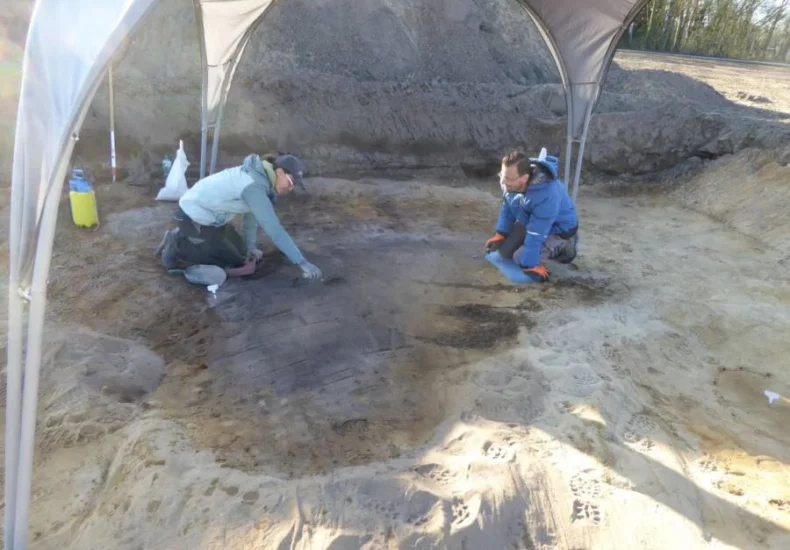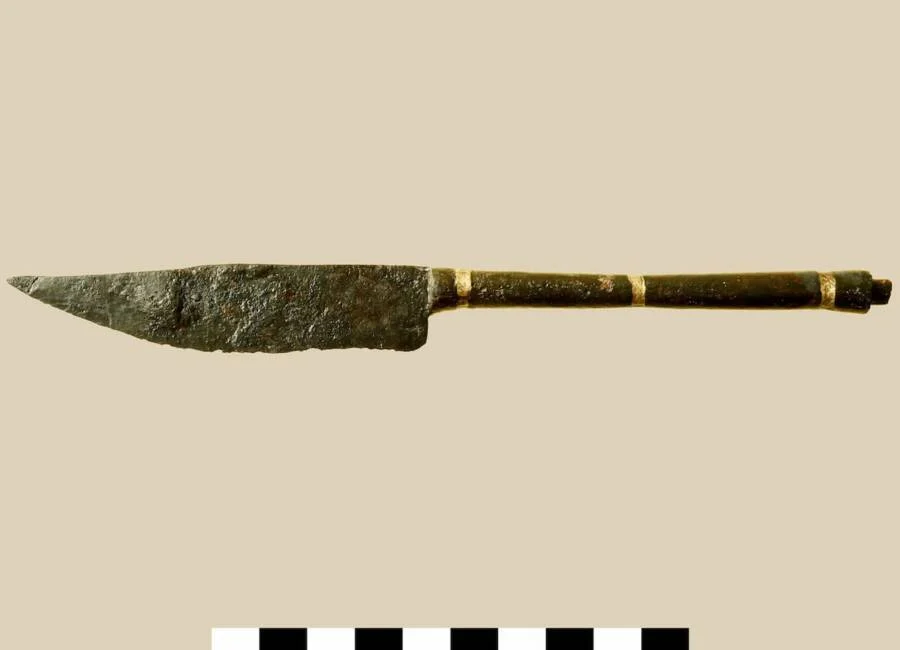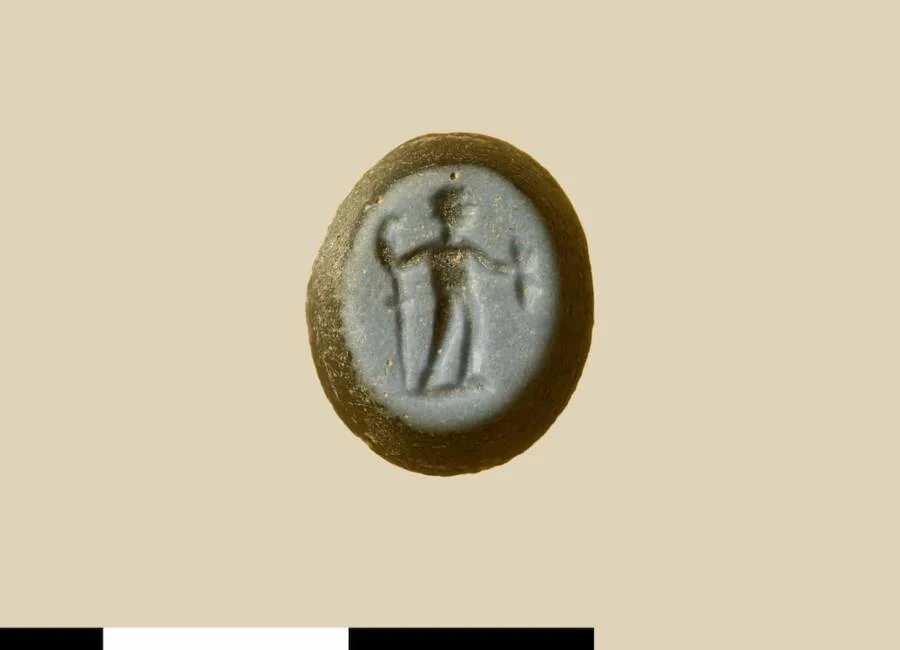
Roman Traces in the Heart of Germany: Surprising Discoveries in Delbrück-Bentfeld
In the quiet countryside of northwestern Germany, archaeological excavations in Delbrück-Bentfeld have uncovered an unexpected Roman presence beyond the borders of the Roman Empire. This discovery reshapes our understanding of Roman influence in the region and illuminates the complex interaction between Roman settlers and local populations.
Located on the banks of the Lippe River, approximately 90 miles from the Roman frontier, the Limes Germanicus, the site was initially considered a simple farmstead discovered in 2017. However, meticulous excavations by the Regional Association of Westphalia-Lippe (LWL) revealed a settlement consisting of three distinct farmsteads, thriving between the 1st and 3rd centuries CE.
Among the most remarkable findings are a residential building surrounded by post holes indicating its structure. Additionally, a farmyard to the southwest was discovered, featuring a kiln containing traces of non-ferrous metal. This suggests that various economic activities, such as jewelry production, took place in this remote settlement.

Dr. Sven Spiong of the LWL Archaeology Centre emphasized the significance of these artifacts. Coins and ceramics found at the site will help determine the age of the farmsteads and clarify whether they existed simultaneously or shifted locations over time. The wooden construction techniques of the period necessitated the abandonment of decaying structures and the construction of new ones.
Intriguing artifacts discovered include a finely crafted cameo gemstone depicting Mercury, the Roman god of commerce and travel, and a well-preserved knife adorned with decorative brass stripes, buried as part of a ritual offering to ward off evil spirits.

These findings in Delbrück-Bentfeld not only shed light on the daily lives of the Romans who settled in this region but also demonstrate the cultural exchange between Romans and local populations. The presence of Roman coins and ceramics, alongside local artifacts, indicates a blending of cultures that enriched the region’s history.
Delbrück Mayor Werner Peitz highlighted the importance of these discoveries, stating, “These archaeological excavations open a unique window into the past. Every find preserves a piece of history for future generations and brings us one step closer to the world of our ancestors.”
As excavations continue, researchers are eager to learn more about this Roman settlement and its role in the broader narrative of Roman expansion and cultural integration in Germania. These studies promise to provide new insights into the lives of those who inhabited this remote corner of the Roman Empire, enriching our understanding of ancient history.
Regional Association of Westphalia-Lippe
Cover Image Crediit: Archaeologists excavating a pit at a Roman farmstead in Delbrück-Bentfeld, Germany. S. Spiong/LWL
You may also like
- A 1700-year-old statue of Pan unearthed during the excavations at Polyeuktos in İstanbul
- The granary was found in the ancient city of Sebaste, founded by the first Roman emperor Augustus
- Donalar Kale Kapı Rock Tomb or Donalar Rock Tomb
- Theater emerges as works continue in ancient city of Perinthos
- Urartian King Argishti’s bronze shield revealed the name of an unknown country
- The religious center of Lycia, the ancient city of Letoon
- Who were the Luwians?
- A new study brings a fresh perspective on the Anatolian origin of the Indo-European languages
- Perhaps the oldest thermal treatment center in the world, which has been in continuous use for 2000 years -Basilica Therma Roman Bath or King’s Daughter-
- The largest synagogue of the ancient world, located in the ancient city of Sardis, is being restored











Leave a Reply